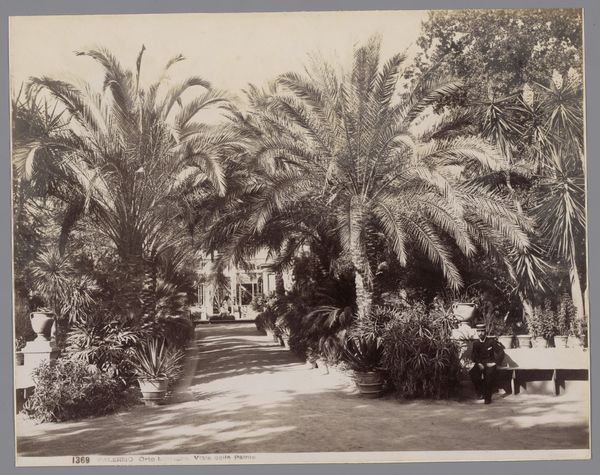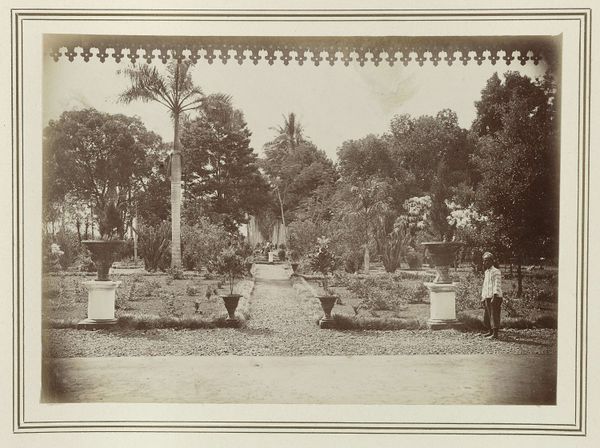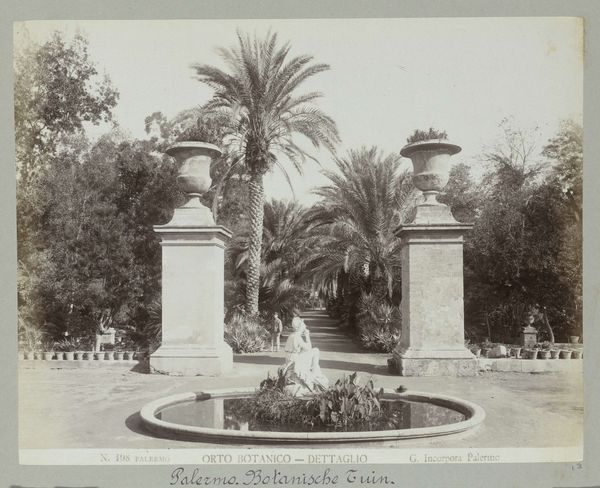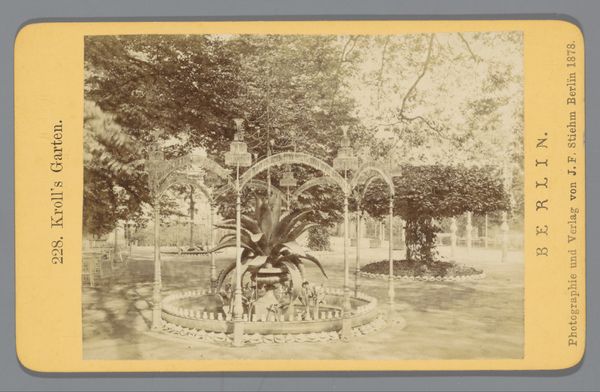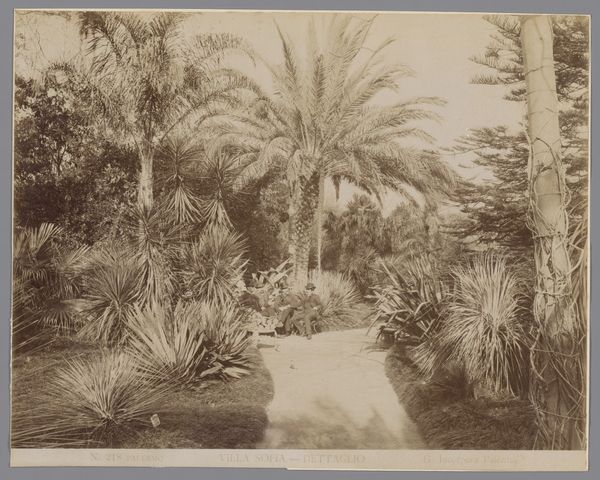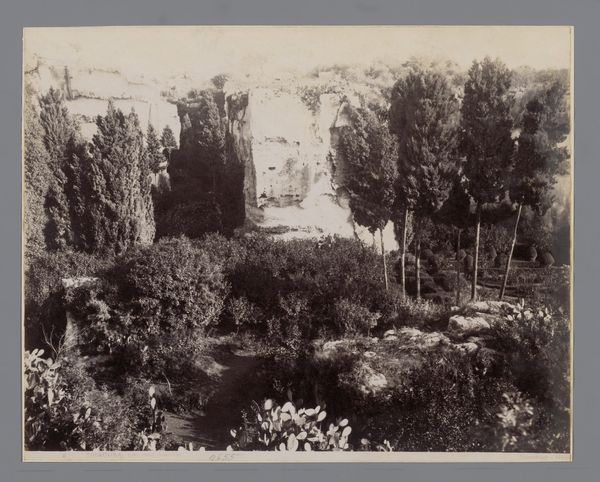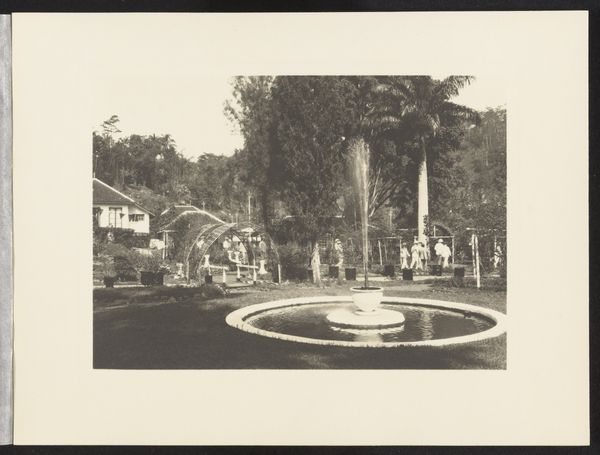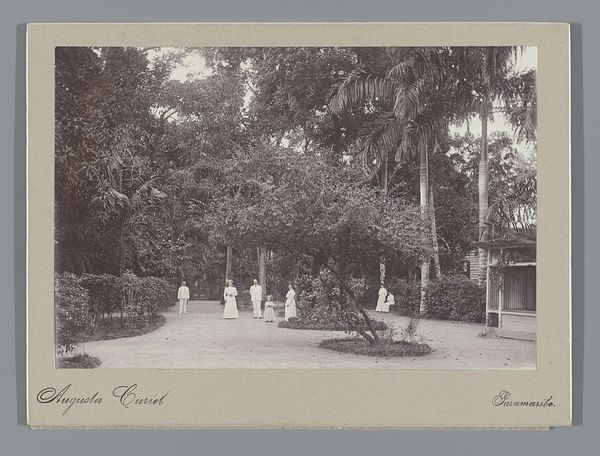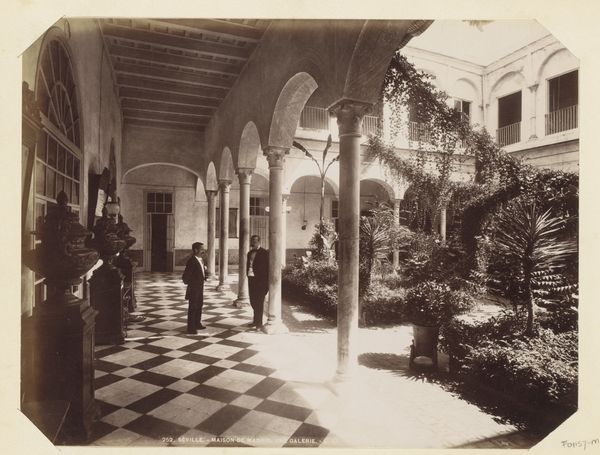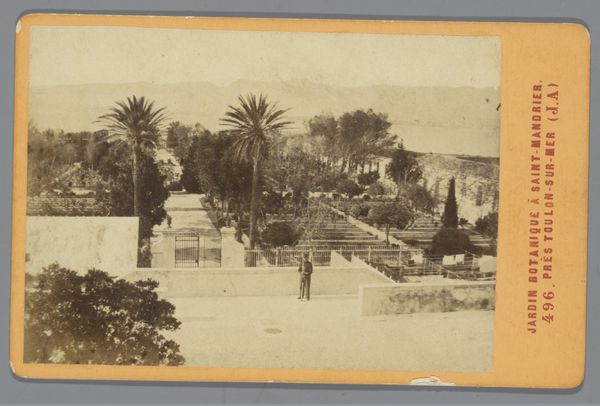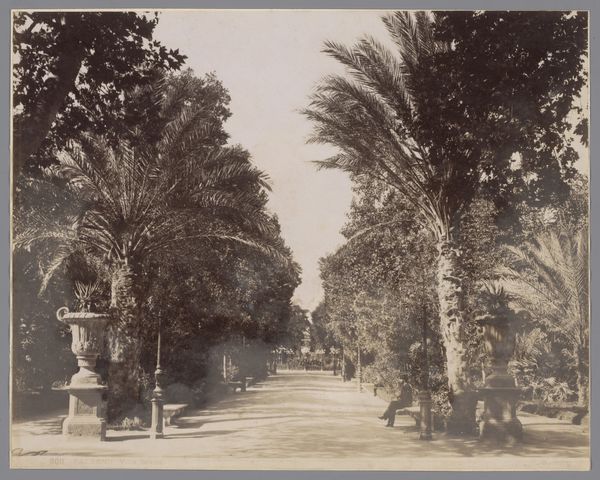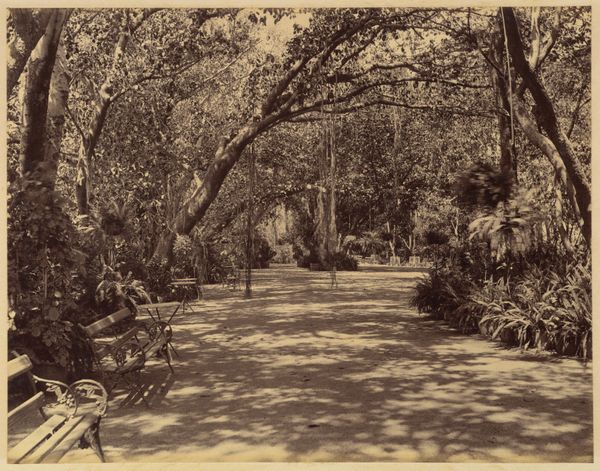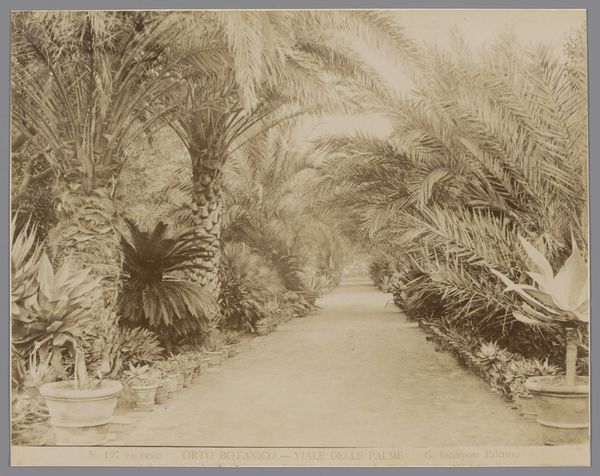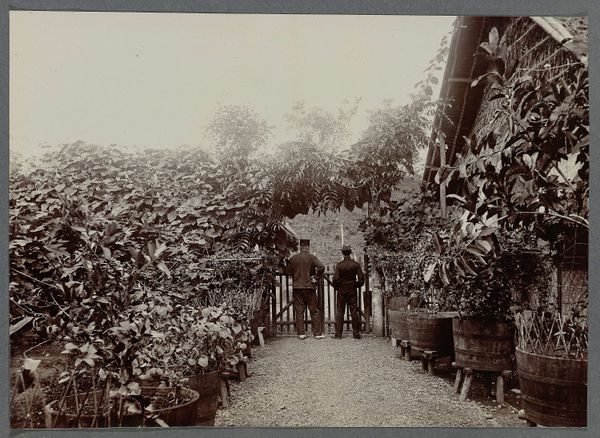
Botanische tuin, Las Palmas, Gran Canaria, Canarische Eilanden c. 1900 - 1920
0:00
0:00
Dimensions: height 174 mm, width 228 mm
Copyright: Rijks Museum: Open Domain
Curator: The sepia tones of this photograph lend it an aura of quiet contemplation. What do you notice first about this composition? Editor: A sense of serenity. The subdued light, the almost ghostly fountain... it evokes a feeling of nostalgic longing, a kind of idealized tropical vision. Curator: This photograph, titled "Botanische tuin, Las Palmas, Gran Canaria, Canarische Eilanden" – depicting the botanical gardens in Las Palmas – was taken sometime between 1900 and 1920, placing it firmly within the Pictorialist movement. The photographer is Jordão da Luz Perestrello. Editor: Pictorialism makes sense. I'm thinking about the construction of these leisure spaces in relation to colonialism; spaces where certain exotic, controlled, safe representations of "nature" are being projected and consumed by a European audience, distanced from the realities of colonial exploitation. Curator: Indeed, the controlled, almost stage-like composition speaks to that impulse. There’s a very deliberate arrangement to this garden. What strikes me is the almost performative aspect of these gardens as embodiments of power and control. The exotic landscape packaged as pure aesthetic experience, ignoring the labor and resources required to maintain it. Editor: And the absence of people reinforces this. Is it a pristine, unspoiled Eden or a sanitized, regulated showcase? Also, note how the technique -soft focus, muted tones- reinforces this dreamy unreality, making it feel almost divorced from a specific place or time. It fits neatly into broader power dynamics. Curator: A point well-made, and that impressionistic quality, in line with trends in photography from the period, further romanticizes the scene. Perestrello creates this beautiful space through a lens, imbuing it with a romantic atmosphere of tranquility. It serves, really, as a commentary of its time. Editor: Thinking about representation, perception and power has definitely helped to shed a critical new light on something seemingly very simple. Curator: I agree. By understanding the social history embedded within the image, its apparent beauty gains deeper meaning and greater depth.
Comments
No comments
Be the first to comment and join the conversation on the ultimate creative platform.
